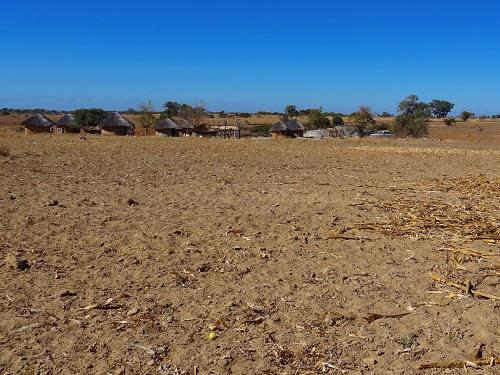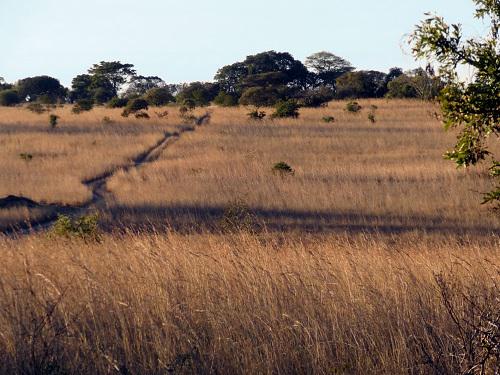Martin Dallimer
Other projects
Farming practice is often intimately associated with biodiversity. Small-scale subsistence agriculture in the developing world offers both threats and opportunities for biodiversity conservation. Here we will explore the relationships between farming practice and the bird community within a subsistence farming community in Zimbabwe. By carrying out bird surveys and socio-economic interviews of farmers we will quantify what types of small-scale agriculture are most compatible with avian biodiversity conservation.

Debshan farmland.
Our first Rufford Small Grant (“The impact of rapid land redistribution on avian diversity and abundance”) examined coarse-scale land use change between a commercial cattle/game ranch and small-scale subsistence farms that now occupy some of the former extent of Debshan Ranch, in central southern Zimbabwe. Although some types of birds (game birds, raptors, large bodied species) were largely absent from the small-scale subsistence farms, one surprising result was that avian diversity and richness was similar between the two land uses. This very much conflicted with our personal experiences of being on site. However, what was apparent was that there was considerable variation in the avian communities which we encountered between different sites situated in the small-scale subsistence farmland. This was likely driven by the larger degree of habitat heterogeneity that a matrix of small farms generates. In turn, it is probable that the land management and farming decisions of individuals are determining, to a certain extent, the avian communities present on their farms. This is therefore what we plan to investigate in this Second Rufford Grant.

Debshan grassland.
There is considerable research interest into whether farmed landscapes in the developing world can deliver multiple benefits, for example in terms of food production and habitat for biodiversity. Through our initial funding from Rufford, we have already established that subsistence farming can provide habitat for a large proportion of the avian community. However, we know that farming practice, crop types, livestock types and density and use/dependence on firewood and non-timber forest products can have a major impact on biodiversity. Understanding and quantifying the relationships between farming/land management practice and biodiversity is essential if we are to facilitate the uptake of biodiversity friendly agricultural practices. Similarly, we must recognise the central role that maintaining income and yields has in a small-scale farming setting. Currently however, there is little information about how bird abundance and diversity may respond to the different farming practices now found in small-scale farming areas.